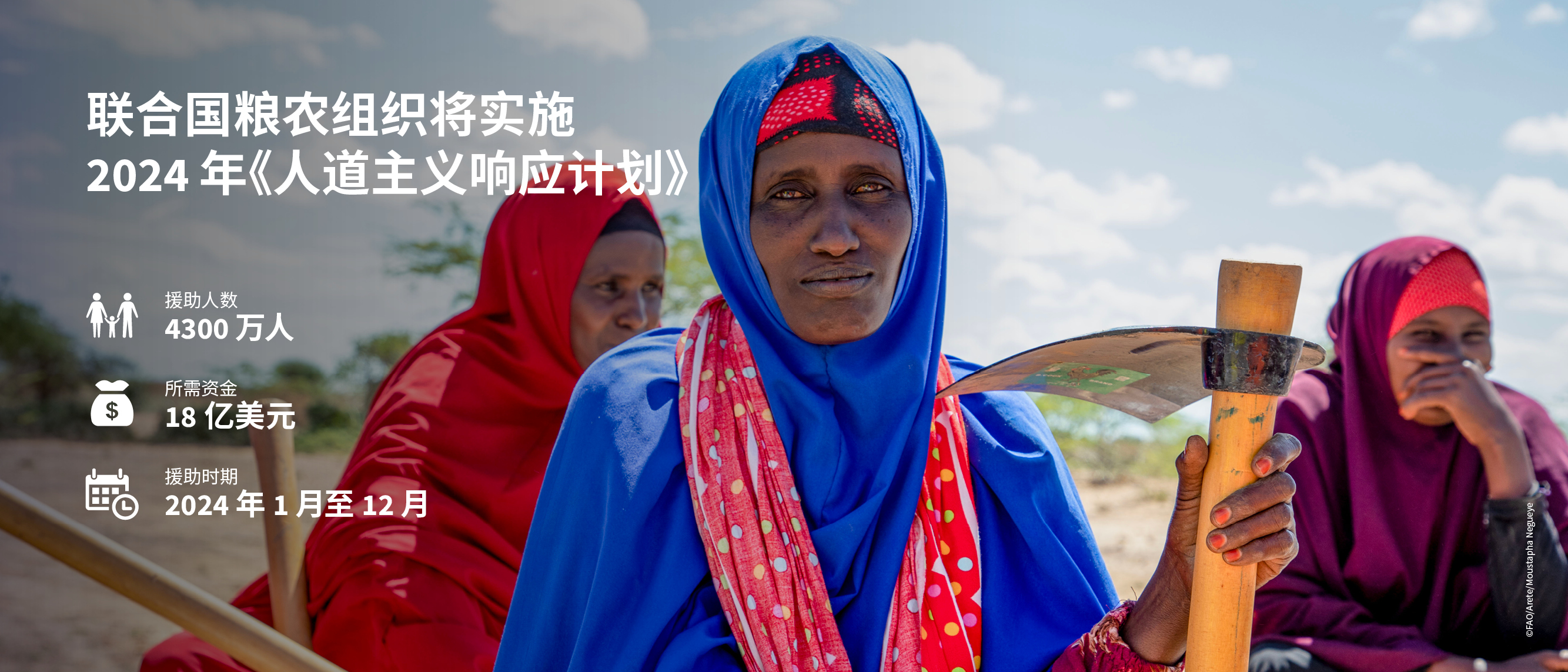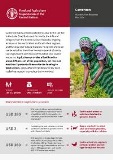

联合国粮农组织将实施2024年《人道主义响应计划》
12/2023
2022年底,《全球粮食危机报告》指出,即便在最高的人道主义响应筹资水平之下,分布在53个国家的10亿待援助对象中仍有四分之一面临突发粮食不安全状况,并创下新高。
2023年,人道主义需求全年居高不下,令人忧心:53个国家2.58亿民众面临突发粮食不安全状况。同时,人道主义预算开始收紧,援助缺口达数百万人。
预期2024年全球粮食危机还将继续。气候危机引发极端天气事件,新冲突暴发,旧冲突加剧,经济不稳定,各项因素交织重叠,不断推高人道主义需求。
人道主义需求高位徘徊,而双边捐助方供资水平可能进一步缩小,这意味着制定2024年《人道主义响应计划》的过程中,必须紧紧围绕最危险人群和最具成本效益的举措,满足其短期内的粮食安全需求。
2024年,在《人道主义响应计划》框架下,联合国粮农组织将筹措总计18亿美元,帮助4300万民众生产粮食。当前,供资水平缩小,提供该资金支持既是在拯救生命,也具有成本效益,捐助方平均每捐助50美元,农户就将生产300美元的粮食。
Burkina Faso: Humanitarian Response Plan 2024
03/2024
In Burkina Faso, insecurity continues to spread across the country, making it increasingly difficult for vulnerable populations to access humanitarian assistance.

Cameroon: Humanitarian Response Plan 2024
03/2024
Cameroon faces a multifaceted crisis due to the conflict in the Lake Chad Basin and Far North, the influx of refugees from the Central African Republic, ongoing tensions in the North-West and South-West regions, and the impact of natural hazards.

Central African Republic: Humanitarian Response Plan 2024
03/2024
The Central African Republic is one of the world’s ten poorest countries, with around 7 in 10 Central Africans living below the poverty line on less than USD 2.15 per day.

Chad: Humanitarian Response Plan 2024
05/2024
Chad now has the seventh highest number of refugees in the world. This is putting pressure on the limited natural resources of host communities, already struggling to cope with years of armed conflict, socioeconomic challenges and recurrent natural hazards.

Democratic Republic of the Congo: Humanitarian Response Plan 2024
03/2024
The Democratic Republic of the Congo is one of Africa’s largest internal displacement crises, with 22 percent of the population acutely food insecure due to increased armed conflict and the impact of climate hazards.
